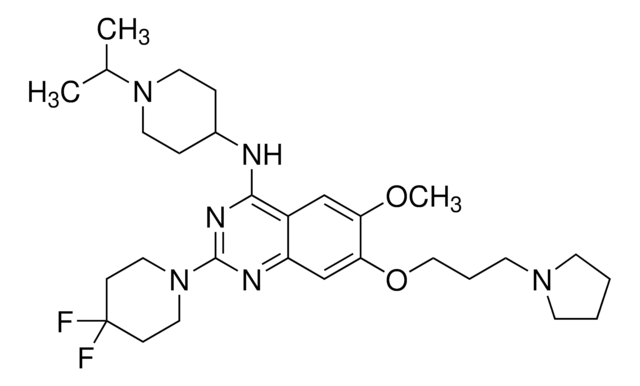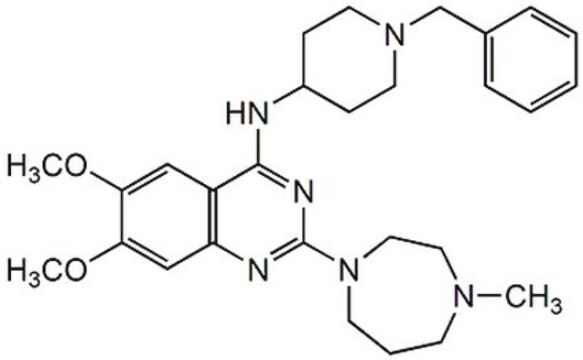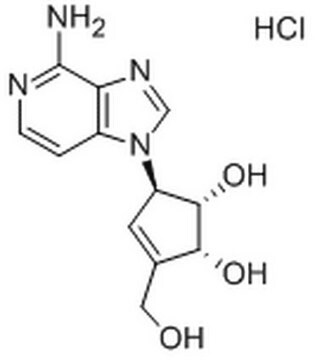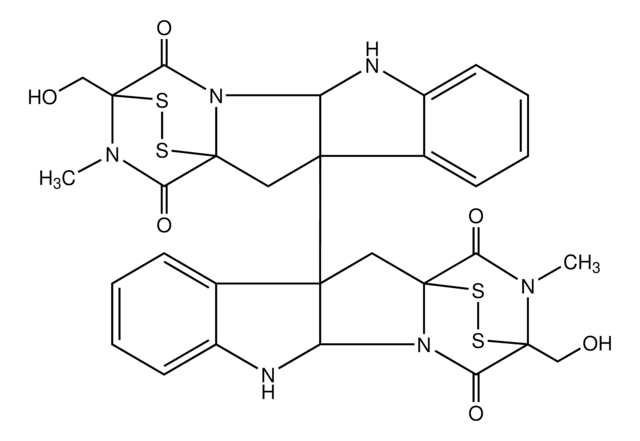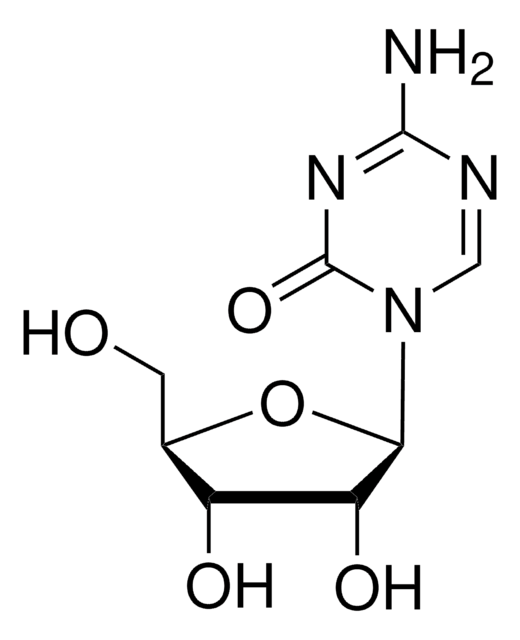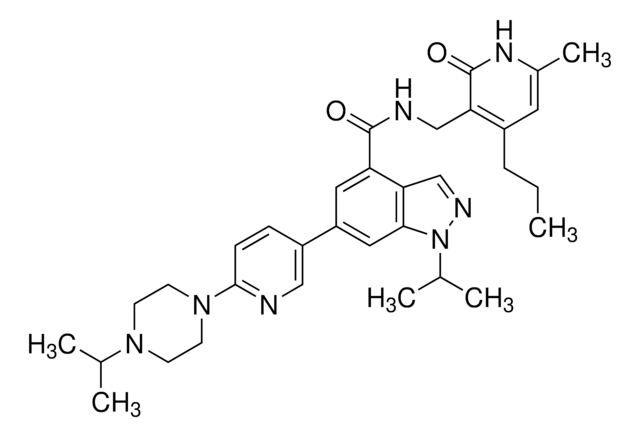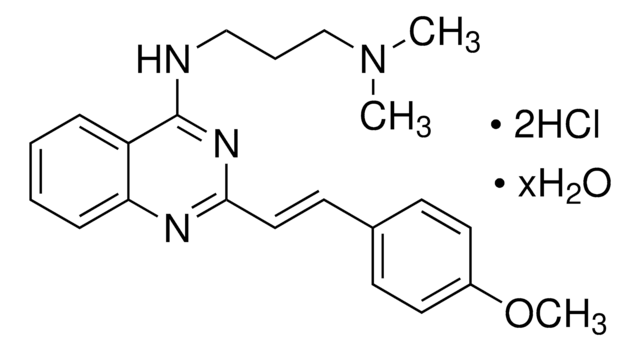B9311
BIX 01294 trihydrochloride hydrate
≥98% (HPLC), powder
Synonym(s):
2-(Hexahydro-4-methyl-1H-1,4-diazepin-1-yl)-6,7-dimethoxy-N-[1-(phenylmethyl)-4-piperidinyl]-4-quinazolinamine trihydrochloride hydrate, BIX 01294
About This Item
Recommended Products
Quality Level
Assay
≥98% (HPLC)
form
powder
storage condition
desiccated
color
white
solubility
H2O: >20 mg/mL
storage temp.
2-8°C
General description
Application
- as a histone methylation inhibitor to treat E4 cells for analysing green fluorescent protein (d2EGFP) expression
- to investigate the role of G9a in neuroblastoma tumor growth
- as specific inhibitor of G9a to treat the SK-N-AS, BE(2)-C, SK-N-DZ, SK-N-F1, and SHEP1 neuroblastoma cell lines
Biochem/physiol Actions
Features and Benefits
Other Notes
Storage Class Code
11 - Combustible Solids
WGK
WGK 3
Flash Point(F)
Not applicable
Flash Point(C)
Not applicable
Personal Protective Equipment
Certificates of Analysis (COA)
Search for Certificates of Analysis (COA) by entering the products Lot/Batch Number. Lot and Batch Numbers can be found on a product’s label following the words ‘Lot’ or ‘Batch’.
Already Own This Product?
Find documentation for the products that you have recently purchased in the Document Library.
Customers Also Viewed
Related Content
We offer a variety of small molecule research tools, such as transcription factor modulators, inhibitors of chromatin modifying enzymes, and agonists/antagonists for target identification and validation in gene regulation research; a selection of these research tools is shown below.
Our team of scientists has experience in all areas of research including Life Science, Material Science, Chemical Synthesis, Chromatography, Analytical and many others.
Contact Technical Service